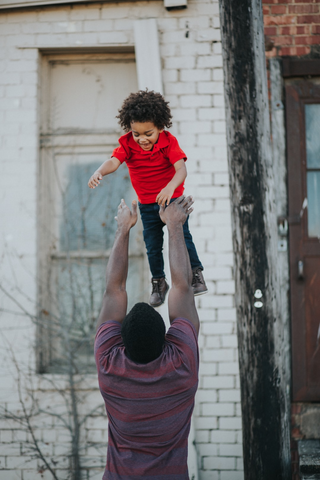Introduction:
When your child was born, I can well imagine you were so excited to start teaching him everything you knew. You eagerly waited for her to start saying words so you could begin showing her the world. But the first word out of her mouth wasn’t “mama” or “dada” like you had hoped. It was “no.”

At first, you were most likely taken aback. Why did she learn that word so quickly? You probably didn't realize that you had been teaching it to her all along. Whenever she would reach for something you didn’t want her to have or do something you didn’t want her to do, you would say “no.”
I quickly realized that I needed to change my approach. If I wanted them to learn the words “please” and “thank you,” I need to model those behaviors myself. I also need to give her the opportunity to say “no” without consequence. In other words, I needed to let her be a toddler and teach the appropriate, healthy way to say "no."
Why is saying no important to your child?

Children are constantly bombarded with choices and requests, and it can be hard for them to know how to say no. But it's important to teach them this skill, as it can help them in many areas of their life.
Saying no can help your child stay focused and on task. It can also help them avoid overcommitment and dangerous or unhealthy situations. And it can teach them to be assertive and to stand up for themselves.
Of course, you don't want your child to say no all the time. But teaching them when and how to say no is an important part of their development.
What are other benefits of teaching kids to say no?
There are several other benefits to teaching kids to say no. It can help them develop self-control and autonomous decision-making skills. Additionally, it can teach them how to set boundaries and to stand up for themselves. Additionally, research has shown that kids who know how to say no are less likely to engage in risky behaviors, such as drug use. So, teaching kids to say no can have a lasting positive impact on their lives.
It's no secret that kids today are under a lot of pressure. They're bombarded with messages from peers, social media, and the larger culture telling them that they need to be perfect. They need to have the perfect body, the perfect clothes, the perfect grades. And they need to do it all without ever saying no.
How do you teach kids to say no?
So how do we teach kids to say no? It starts with helping them to understand that it's okay to be imperfect. That they don't need to do everything that's asked of them. And that it's okay to say no.
Here are seven tips for teaching kids to say no:
1. Help them to understand why it's important to say no. Explain that saying yes to everything can lead to burnout and that it's okay to say no to things that don't interest them or that they don't have time for. Teach them to prioritize their own needs and feelings.
2. Role-play different scenarios where saying no might be necessary. For example, if someone offers them drugs or alcohol, or if they're asked to do something that feels uncomfortable or unsafe.

3. Give them practice saying no in a safe and controlled environment. Encourage them to use assertive communication skills such as making eye contact, speaking confidently, and using clear language.
4. Teach them to offer an alternative response, such as "I can't do that right now, but maybe we can do something else later."
5. Help them to recognize and resist peer pressure. Teach them to trust their instincts and make decisions that align with their values and beliefs.
6. Praise them when they make good choices and say no to something that's not in their best interest. Let them know that their autonomy and independence are important to you.
7. Model healthy boundaries and saying no when necessary. Show them that it's possible to be firm and respectful at the same time.
Why is it important to have parenting boundaries?
It is important to have parenting boundaries for a number of reasons. First, it helps to establish a healthy parent-child relationship. Second, it helps to ensure that the child grows up to be a well-adjusted individual. And third, it helps to prevent the child from becoming a problem child.
 There are a number of ways to establish parenting boundaries. For example, you can set rules and limits for the child. You can also provide the child with structure and routine; establishing times for independent play with active toys vs quiet play with a coloring book. One such active toy is the Wooden duck toy from Ardency Elite. This way you can nurture the child's physical, emotional, and social development.
There are a number of ways to establish parenting boundaries. For example, you can set rules and limits for the child. You can also provide the child with structure and routine; establishing times for independent play with active toys vs quiet play with a coloring book. One such active toy is the Wooden duck toy from Ardency Elite. This way you can nurture the child's physical, emotional, and social development.By establishing parenting boundaries, you are giving your child the best chance to grow up to be a happy and successful individual. And you provide them with a strong support system.
What are the benefits of having a strong parental support system?
By this point, you've most likely identified some of the many benefits of having a strong parental support system for your child as you teach them to say "no". Some of these include:
- Improved academic performance in children
- Reduced stress levels in children
- Increased self-esteem in children
- Better social skills in children
These are just some of the benefits that have been well-documented in research. It's clear that having supportive parents can make a big difference in a child's life. If you're a parent, try to be as supportive as you can be. Your child will thank you for it later.
To wrap things up
We want to thank you for taking the time to read this article. We hope it was helpful in giving you a better understanding of the reasons for and benefits of teaching your child to say now in a strong, supportive parental environment. Also consider teaching kids healthy habits through active play with toys like the Duck Runner toddler toy. Its a great way to keep them engaged in independent play.
We wish you happiness and reward in all your endeavors.

